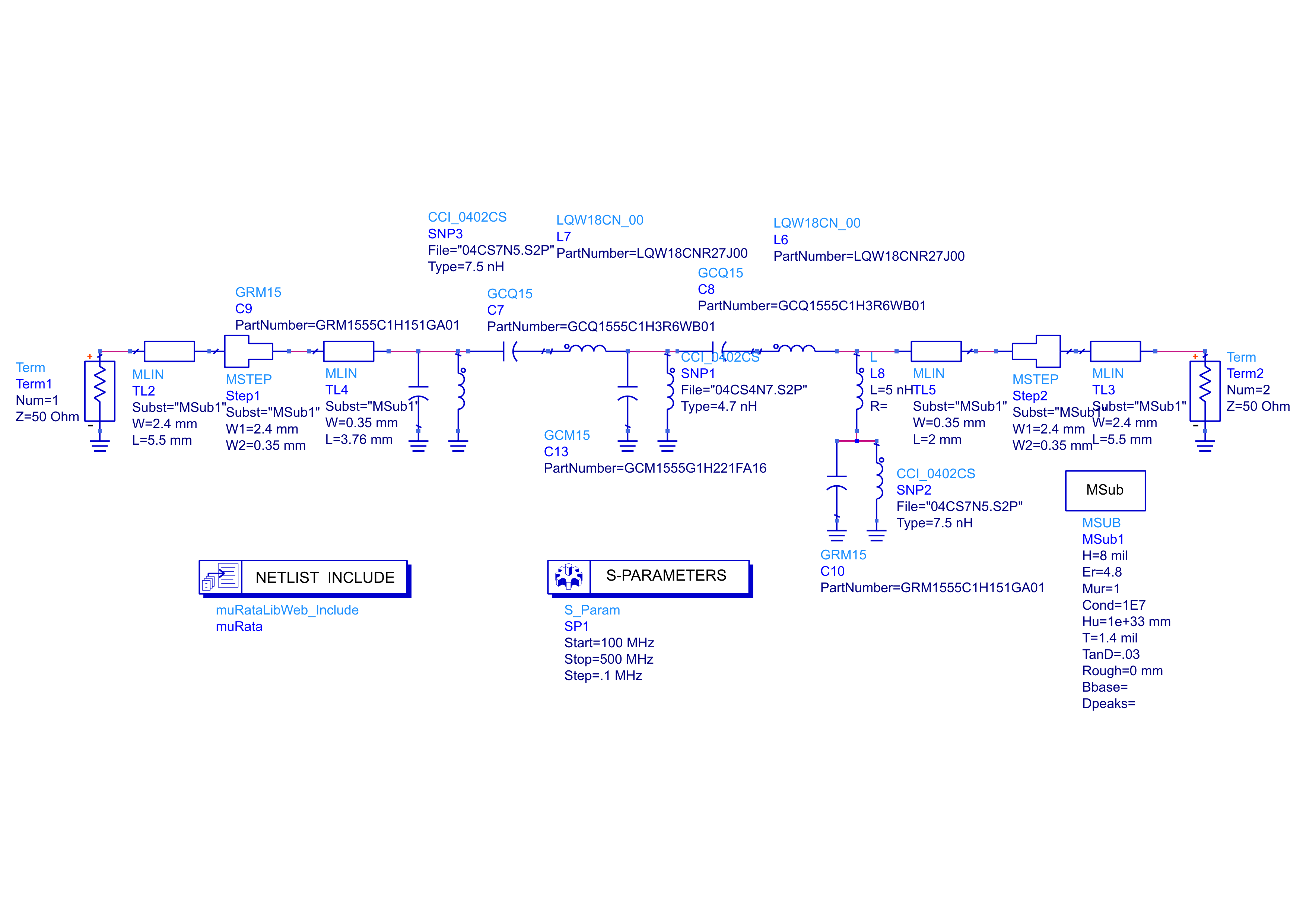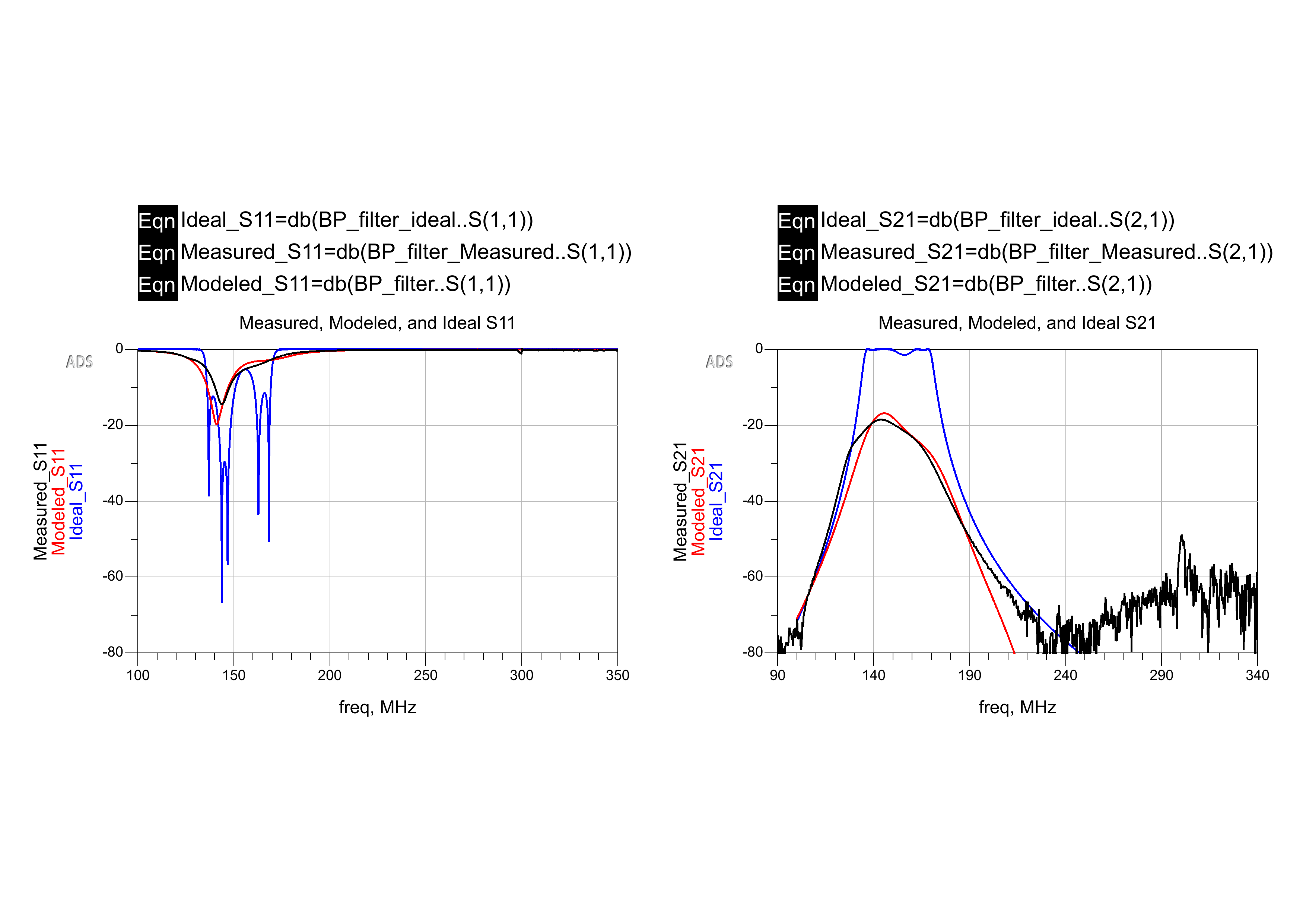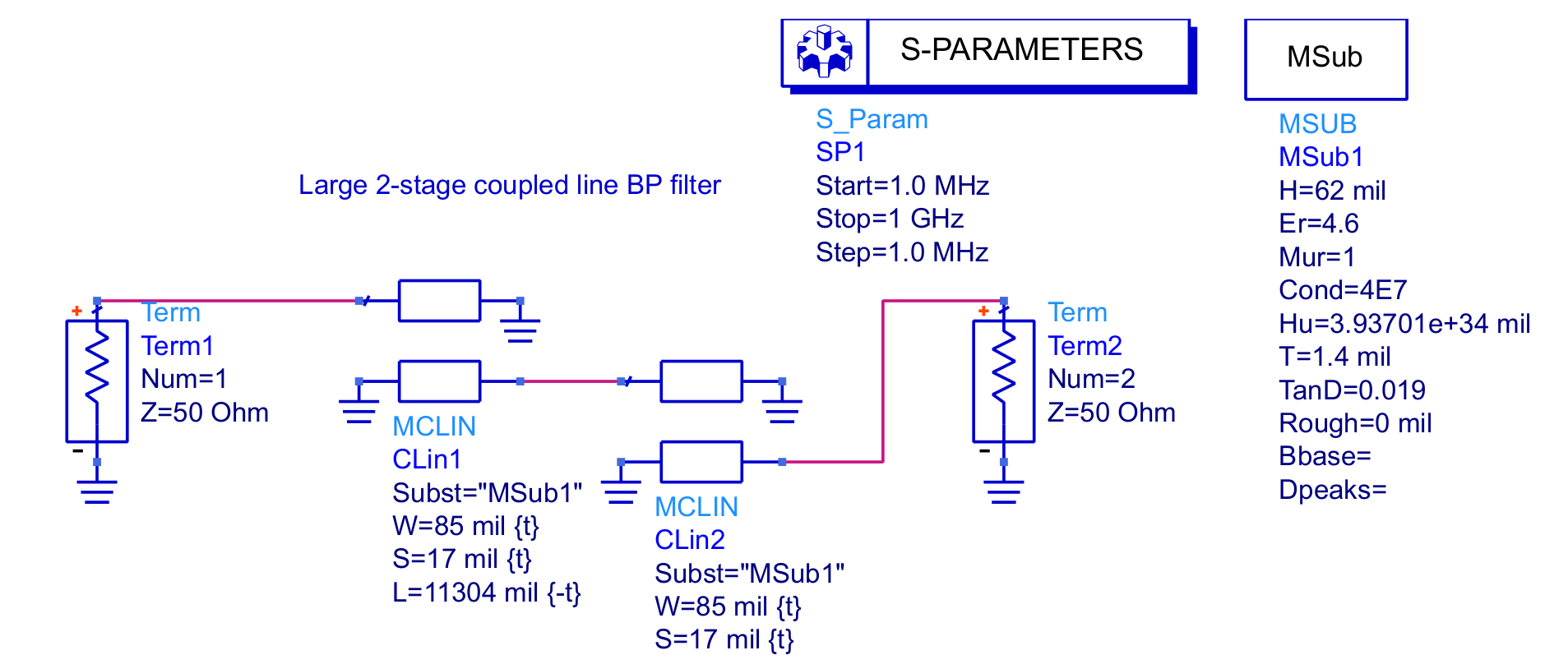Introduction
My arduino-controlled AD9850-based APRS transmitter is one application that requires small and low-loss VHF filters. More specifically, a sharp-cutoff bandpass filter is required to reduce mixing products and harmonics thereof below the legal limit. The initial approach was to use a 5th order LC Chebyshev bandpass filter.
Prior to using Keysight's Pathwave ADS, this filter was simulated in LTSpice with ideal components. Ideal components result in the filter working perfectly, but success with this design was practically far more challenging as a result of the nonexistence of ideal components. As documented in a previous post, the sharp-cutoff LC bandpass filter performed too poorly in the real world than could be useful, with a measured insertion loss of nearly 20dB in the passband.
The first step after measuring unexpectedly attenuated waveforms about this filter was to build the filter on an pull-out structure that I included on the transmitter board for further testing with an SMA connector at each of its two ports. Upon measuring this with a NanoVNA pocket vector network analyzer, the 20dB insertion loss was observed. To confirm the plausibility of these results (being wary of measurement or calibration error), I created an identical schematic to the pull-out structure with this filter in a new ADS schematic, using models from MuRata's design kit for the MuRata components used. I tried to approximately model the microstrip transmission line to the SMA connectors using MLIN and MSTEP components in ADS after creating an MSub block with the parameters of the PCBWay board. The schematic is shown in Figure 1:

The NanoVNA was connected with the NanoVNASaver software to save a touchstone file for comparison with ADS's S-Parameter simulation. Results are displayed in Figure 2:

The blue traces show what was initially expected, having initially simulated everything with ideal components. The red and black traces show what was modeled with actual component libraries in ADS and measured via the NanoVNA. Evidently, this bandpass filter is not usable for this application, as 20dB insertion loss in the passband removes far too much of the desired signal. While the return loss is very favorable in the 144MHz passband, the insertion loss in the passband is too significant. A different bandpass filter technology must be employed to combat this issue.
Parallel Coupled Lines as Chebyshev Bandpass Filters
Parallel quarter-wavelength coupled lines can be used to realize fairly low-loss bandpass filters with microstrip technology in some cases where LC filters might not be practical [1].
The elements of the bandpass filter can be treated as admittance inverters in order to derive coupled lines that take the place of the lumped elements [1].
Even and odd characteristics for parallel quarterwave coupled lines used to replace lumped elements in a symmetric chebyshev bandpass filter can be found by determining the characteristic admittances about each element [1, 3]. Even and odd characteristics for elements of a 0.5dB ripple chebyshev bandpass filter with a fractional bandwidth (3dB cutoff angular frequency delta over the center) of approximately 0.12 as calculated by Abhinaya et al. are listed in Table 1 [1].
| Element (1 through n) | Z0e (Ohms) | Z0o (Ohms) |
| 1, n | 72.025 |
38.929 |
| 2, n-1 | 57.282 |
44.382 |
| 3, n-2 | 55.844 |
45.274 |
LineCalc is used to determine the physical parameters of microstrip coupled lines for a two-element bandpass filter about 144 MHz (see Figure 3). Both sets of coupled lines in this filter are identical, being the first and last (1, n in Table 1) elements in a symmetric filter. The substrate parameters used for the design of this filter are those from JLCPCB's capabilities from here on.

This is implemented in an ADS schematic (figure 4) as a pair of diagonally shorted coupled line pairs.
S parameter data from the simulation is shown in Figure 5.


As displayed in Figure 5, simulated insertion loss is far more acceptable than that of the original, lumped-element filter (shown in Figure 2). The rolloff is not nearly as steep, so for use in my transmitter design, more elements are required (more elements exist in the original, lumped-element filter). However, rejection of many of the mixing tones' harmonics around 250MHz is quite acceptable.
Each of these pairs of coupled lines is approximately 11.3 inches long. Because of this massive size at VHF frequencies, more elements might not be practical in most applications, including in my Arduino controlled APRS transmitter. Regardless, microstrip coupled line filters offer advantages over lumped-element equivalents in terms of loss and, depending upon size and constraints of PCB fabrication, potentially cost.
Simulation with non-ideal components and materials is extremely helpful in design of such devices because ideal components and materials cannot exist and often exhibit drastically different behavior in narrowband filters.
References
[1] M, Abhinaya, B, B., Dashora, H., & Kumar, J. (2020). Design and implementation of coupled line bandpass filter at c-band. AIJR Preprints. https://doi.org/10.21467/preprints.232
[2] Coupled Line Couplers. (n.d.). Microwaves101. https://www.microwaves101.com/encyclopedias/coupled-line-couplers
[3] Trev45. Even and Odd Mode Impedances. (n.d.). Microwaves101. https://www.microwaves101.com/encyclopedias/even-and-odd-mode-impedances
Microwaves 101 was especially helpful in understanding rf and microwave basics and terminology.